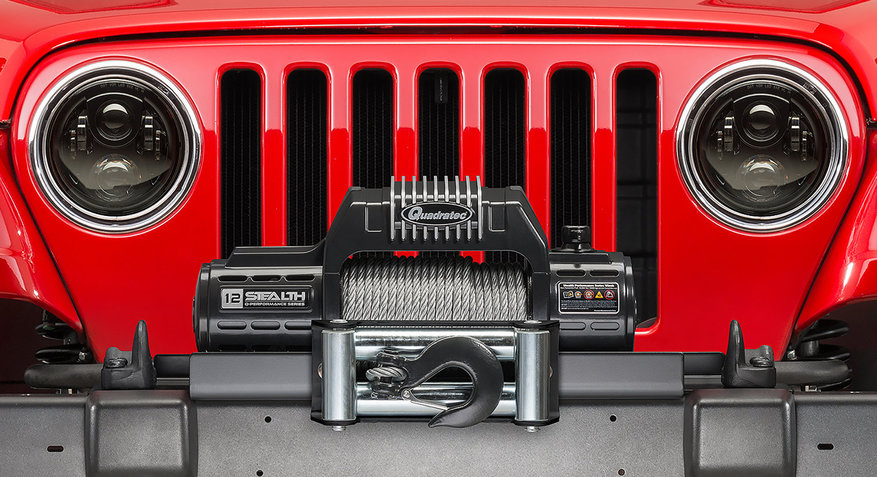by Rick Rotondo
Torque Staff Writer
Over the years, Jeep always seems to be right at the top of the list when it comes to best off-road vehicles. Thanks to its shorter wheelbase, lighter weight and excellent four-wheel-drive system, you really could go for weeks (or months) without getting stuck on the trail.
But, what happens when that day finally arrives? When a trail mishap renders your vehicle, or someone else in your group, unable to continue.
Well, as long as you are properly prepared, most recovery situations can be tackled fairly easily. And a vast part of that preparation is the purchase and installation of a correctly-sized winch.
If you’ve spent any time looking at winches, you know they come in a bunch of different pulling capacities — with the most common for Jeep owners falling in the 8,000-, 10,000- and 12,000-pound column.
So, how do you determine which one of these is best suited for your off-road needs without causing electrical strain or other issues to your vehicle? It’s actually not that complicated.
The most accepted practice for determining the correct winch size for your Jeep is to take its gross vehicle weight rating (GVWR) and multiply by 1.5. This rating is generally located on Jeep’s website (if you have a later-year model), or may be listed on a sticker somewhere on your driver's door.
Door stickers actually provide a host of information about your Jeep, and you may want to write other information down such as factory wheel and tire size, and recommended tire inflation pressure as well for future reference. If you are having trouble finding that sticker, it is commonly placed somewhere on the driver’s side ‘B’ pillar, which is the second vertical column of your Jeep where the front door shuts.
In some cases, you may see this sticker located on the ‘A’ Pillar or even on the door itself. If you can’t find it or don’t see the GVWR listed online, you can contact your local Jeep dealership and give them your vehicle identification number.
Once you’ve confirmed the Jeep’s GVWR, you can now take that number and multiple it by 1.5. Let’s say, for example, you have a 2017 Jeep Wrangler Sahara Unlimited. This Jeep has a stock 5,400-pound GVWR, so 5,400 times 1.5 equals 8,100 pounds. This is the minimum winch pulling power for the Jeep.
Don’t forget though, if you have added large wheels, tires, bumpers, a cargo rack, or other heavy accessories, you will want to add in that total weight as well to the stock GVWR before dividing it by 1.5 and determining that working winch weight rating.
Now that you’ve determined a minimum winch pull rating, here is where things get a little more complicated. That’s because, well, the pulling power of a winch is normally rated at the bottom layer of cable wrapped on the drum — not the top layer where short pulls originate.
What that means: the second layer of cable above the drum cuts the winch’s rated pulling power by about 20 percent. Every layer above that drops it another 10 percent. So, a winch with an 8,000-pound-capacity may only pull at 6,500 pounds on the second layer, 5,500 pounds on the third and perhaps only about 4,800 on the outer wrap. All of a sudden, that 8,000-pound winch which seemed to match up with your 8,100-pound vehicle rating, simply may not be enough.
Sure it probably will get you by during the occasional trail mishap, which is fine for those who only trail ride a few times each year. But enthusiasts who spend more time on the trail (and could run into more issues) should think about choosing a winch beyond just the minimum rating. Perhaps upwards of 50 percent more pulling power than the Jeep’s GVWR.
One final thing to think about when determining which winch size you need, that winch will only pull as much as the vehicle’s electrical system allows. A weak battery equals a weak winch. Always make sure your battery has the juice it needs to power that winch at top efficiency.
Other Articles That May Interest You:
What Are The Differences Between An Electric And Hydraulic Winch?





















